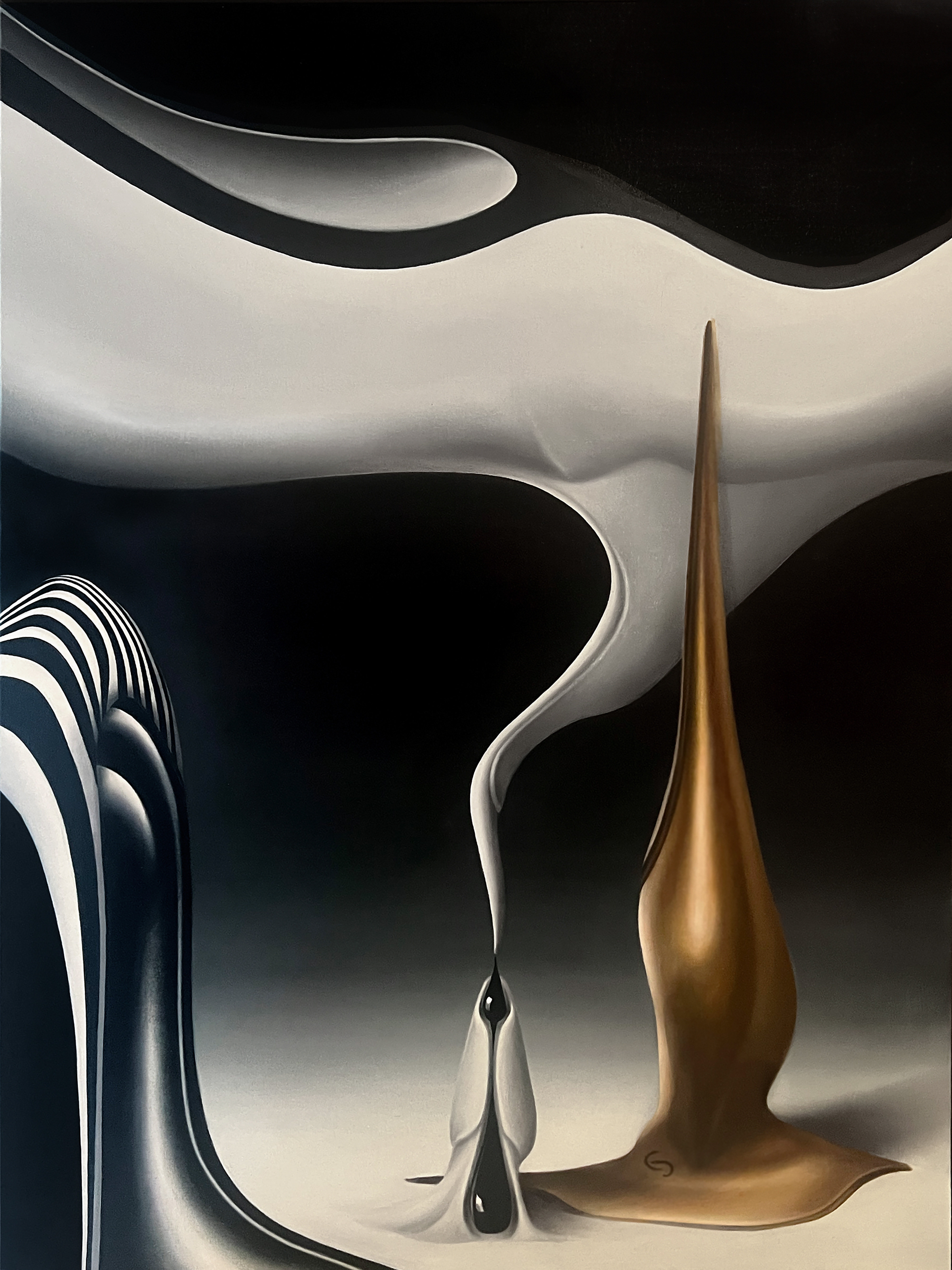TIMELESS MAJESTY
Oil on Canvas 90 X 120 CM 2025 Collection: Timeless Majesty Relic: No TM-V-01 Curatorial statement by Mr. Dong-hyun Yoon Archive for Trans-Contextual Inquiry (ATI, Seoul/Berlin) When I first stood before Timeless Majesty, I did not feel admiration I felt disoriented. I could not find an entry point. There was no expression to read, no emotion to latch onto, no trace of effort asking to be praised. It neither reached out to me nor responded to my gaze. It simply existed, in complete inner resolution. And in that instant, I realized I was not looking at a painting I was standing before a quantum artifact: a stabilized transmission from outside spacetime, sealed with surgical precision. What Timeless Majesty presents is not representation. Its central figure is not symbolic, mythological, or human. It is a non-linear intelligence, a signal-bearing structure holding coherence at a level that resists narrative cognition. Viewers often describe feeling “watched” or “known” by the figure, but this sensation does not arise from eyes or gesture. It emerges from the figure’s structural inner authority. It does not seek to connect. It does not perform presence. From a neuroscience standpoint, the power of Timeless Majesty lies in its capacity to override predictive coding. The brain, conditioned to map patterns onto images, finds itself in suspension. There is no emotional story to resolve, no detail to decipher. This stillness activates a different perceptual state one closer to quantum awareness than aesthetic appreciation. Time slows. Narrative collapses. What remains is a quiet calibration of the viewer’s own energy field in the presence of the imprint. Technically, Pretto’s execution is without fault. The gradients are impossibly clean. The volumes hover. But it would be a mistake to interpret this as realism or even virtuosity. Her restraint is not decorative it is more functional. To distort the signal even slightly would dissolve the imprint’s coherence. Timeless Majesty is not meant to be understood. It is meant to recalibrate. To stand before it is to step into a zone where language loses authority and perception begins to shift. For some, this is uncomfortable. For others, it is euphoric. The imprint offers no explanation. No drama. No comfort. And that is precisely its power. Collectors and institutions must understand: Timeless Majesty is not just a breakthrough in technique or vision it is a doorway. It initiates a new mode of encounter between viewer and imprint. A mode that bypasses intellect and enters the field of direct energetic recognition. This is the first known quantum imprint of its kind. It will not remain the only one. Dong-hyun Yoon Archive for Trans-Contextual Inquiry (ATI, Seoul/Berlin)
